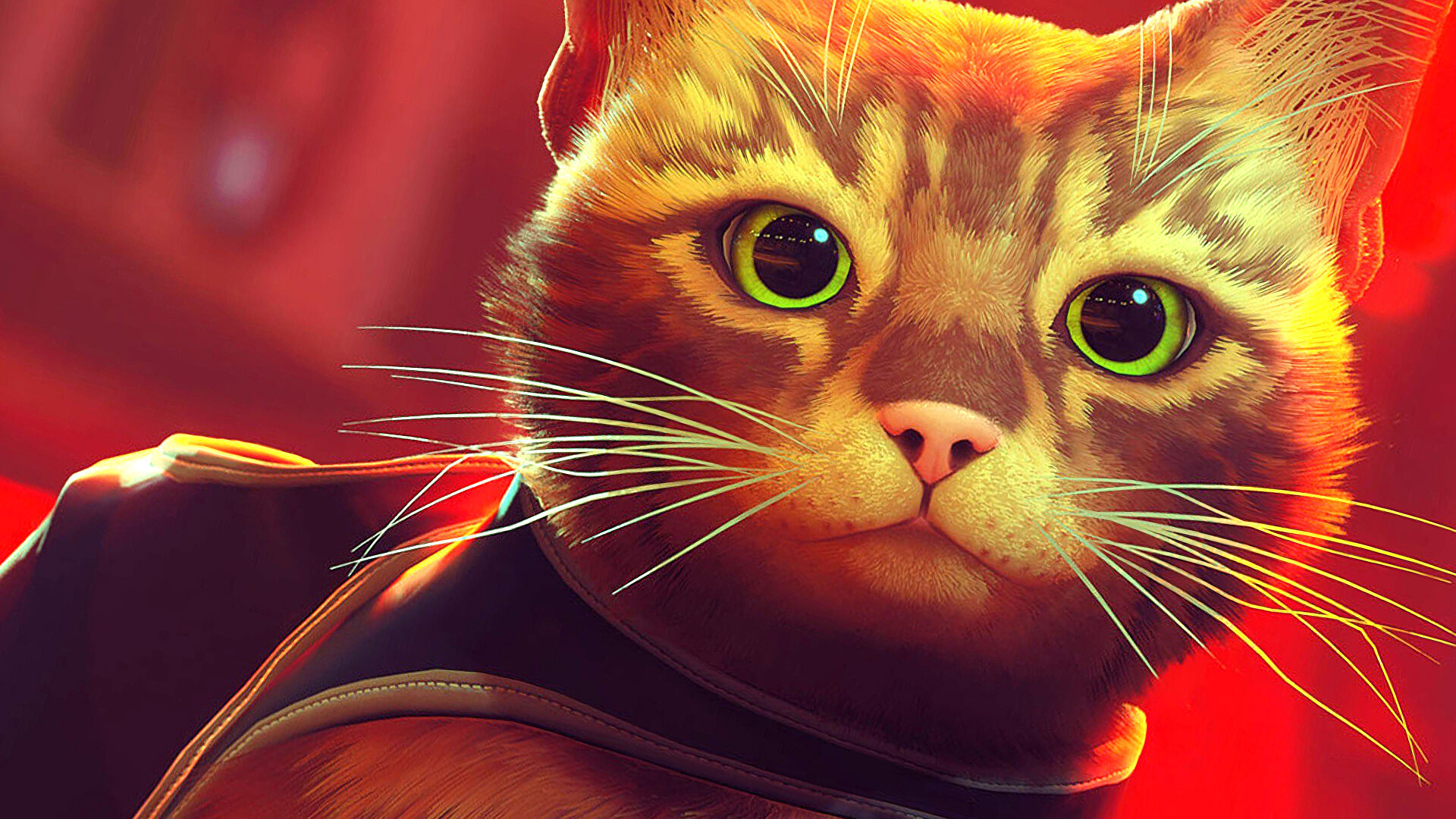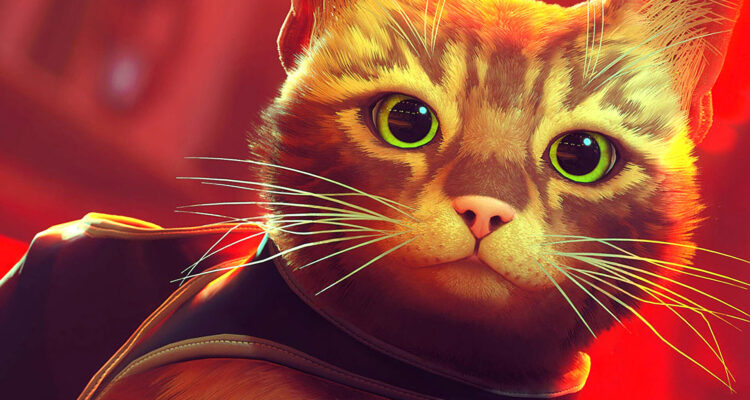
Charming puzzle-platformer Stray is turning heads for all the right reasons at the moment, putting players into the paws of a cute ginger cat exploring a beautifully realised cyber city mysteriously devoid of human life. The game’s available on PlayStation 4, PS4 Pro, PS5 and PC, so how does each platform compare? Do the last-gen consoles hold up against the PS5 release, and what’s the score with the PC version and its rumoured stutter issues? Let’s find out.
The first thing you’ll notice about Stray on PS5 is its install size – at 7GB, it’s remarkable for being almost half the 13GB install on PS4, likely down to more efficient data compression on the new system. Despite its relatively slight profile on PS5’s SSD, Stray packs a grand sense of scale and atmosphere with it, and each location is meticulously layered with ornamental detail. THe world design is what really makes Stray special; a cat-meets-cyberpunk aesthetic that proves striking on any platform you might own. The colour palette at times calls to mind adventure greats like The Last Guardian or Ico, and is uplifted by Unreal Engine 4’s effects suite: screen-space reflections on city streets, smoky volumetric lighting and object physics. Combined, it creates a world that feels ruinous, oppressed by the elements – and yet all at once still alive and tangible.
Let’s cover the basics first: you get a native 1920×1080 and 30fps presentation on PS4 (and PS4 Pro, too for that matter), while PS5 is boosted to a native 3840×2160 and 60fps output. Remarkably this jump to 4K and 60fps means PS5’s rendering eight times the pixels per second compared to its last-gen equivalent – a drastic upgrade. Dynamic resolution scaling is in effect on PS5 at rare points, however, reducing GPU load when needed, and the lowest resolution spotted is 3360×1890. Curiously, in testing for a similar DRS range on a base PS4 and PS4 Pro, it transpires each tends to stick more stubbornly at their 1080p targets, though DRS may be possible. Beyond resolution and frame-rate, changes between the PS4 and PS5 versions are otherwise subtle. The premium machine uses a higher-grade bokeh depth of field effect and potentially longer draw distances during fast transitions, but shadows, texture mapping and much of the world detail appear very close between all three PlayStation machines.





